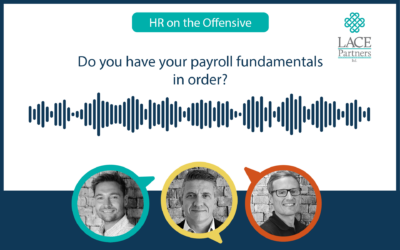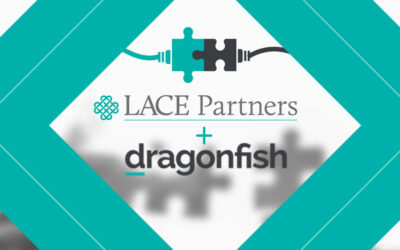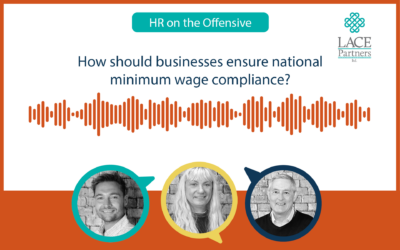The role of HR is shifting – more than ever HR needs transformational consulting capability to partner with the business.
No one would argue that the world of work hasn’t changed, and the pace of change is fast. As we grow out of the pandemic, we have displaced workforces, heightened pressures on health, mental health and wellbeing. We have a changing geopolitical landscape with race and social injustice, fluctuating demand from customers, the climate crisis ever more present in our minds and new digital technologies causing disruption with artificial intelligence, cloud and automation.
The need for and pace of change has never been greater. Businesses that have survived have adapted through reinvention, reimaging their products and services and focusing on what matters by taking care of their people. To thrive in the future of work organisations need to be agile, adaptable and resilient. As humans, we need to learn new things and even unlearn some of the norms from the past to succeed in the world of work.
World Economic Forum on Futurism: Don’t predict the future – project several of them
With so much change and volatility, how can HR keep pace to help their business customers transforming them to not just survive but thrive? The themes and characteristics of new HR models encapsulate digital and automation, employee experience, agile ways of working, and reduction of silos. In this blog, we explore some of our own perspectives of what HR functions can do to provide the right capabilities to partner with the business.
85% of CEOs agree artificial intelligence (AI) will dramatically change their businesses over the next five years (PWC Survey 2019)
HR models of the future will need to remain flexible – adapting, innovating, and reinventing to meet the changing needs of the business, leaders, managers, and employees. Keeping the customer at the centre – both in terms of design and delivery will be paramount. What many analysts and thought leaders recognise more so now is the need for consultants and problem solvers through agile HR capability pools. Gartner advise this should be approximately 40% of the HR function – although their definition is broad, encompassing upgrading HR policies, practices, and resources.
Bringing consulting skills to your HR team: HR change agents
At LACE, we see this capability being focused on not just delivering talent and HR initiatives but wider business change. It is different to strategic HR business partners who are embedded in the business and work with business leaders and managers providing coaching, driving strategic talent priorities, building culture and engagement. The agile HR capability pool, we term as People Consultants, are the delivery engine for workforce and business transformation initiatives. It’s an exciting place to be for any HR practitioner – it offers clear purpose, variety, personal development, opportunity, and networking.
Businesses need to evolve and so do HR skills
So, is this a new need? Perhaps not but it needs calling out. Some of this capability may well sit within ‘organisation development’ but in our experience it tends to get diluted and lost when jumbled in with the OD and learning teams within HR. There can often be limited capacity, capability issues with some practitioners who are highly sought after and also others who are less in demand. There may well be historical association with certain projects internally and how well these went and who worked on them.
With so much demand for change, how does the business get the capability it needs to succeed?
HR can start the journey to establish its own ‘People Consulting’ capability or ‘change agents’ by:
1. Identifying the skills and capabilities that are in demand
People consulting capabilities are required to support business transformation and change initiatives. Examples of what change programmes might be include if you are restructuring of a business unit or division, mergers/ acquisitions/ divestments, new products and services launches, entering new markets, change in business strategy, or a broader organisational transformation.
Some areas to keep in mind:
- Build your HR pipeline in terms of business initiatives (in country, division, globally). Identify the demand and likely supply needed to support the change. This is typically the domain of the Business Partner to identify the pull from the business working as the senior interface.
- Plot the capabilities needed to help the business to succeed now and in the future. HR should mirror aspects of these capabilities to work on transformation and change initiatives. HBR refer to 21 HR jobs of the future.
- Look back at past projects and reflect on the key skills and experiences that are most in demand in your business.
- Acknowledge the technology capabilities needed to support business/HR projects. Data architects, analytics, or general jargon busters. Consider people who can link the ‘human’ to machines and evidence decisions with data.
- Identify the business consulting skills HR are able to or should be able to provide. This includes the ability to structure problems, ask the right questions, work in teams, conduct strategic planning, detailed delivery, cope with pressure and ambiguity, be creative and innovative, communicate effectively, manage tricky stakeholders, identify business outcomes, and tell a compelling story.
- Check how sharp HR’s business and commercial know-how is. Check that HR change agents understand how the business makes money and on what margins. Have them spend time with real customers.
2. Get ready, get organised
With the future demand understood as much as it can be, how do you then organise your People Consultant supply? Perhaps the answer is to get everyone in HR equipped as much as possible with the business capabilities of the future – not just technical HR skills.
- In terms of organisation, could a people transformation office be established to manage requests for projects in a structured fashion, schedule resourcing slots and keep track of benefits delivery and stakeholder satisfaction?
- Could your broader HR practitioner pool each have a talent card or profile available, articulating their interests, achievements, capabilities, and experience? Is it discoverable and accessible online to help find the right resource for the right project?
- Can your internal mobility processes help form cross functional project teams from across your broad HR talent pool? Even in a decentralised or federated model, coordination and collaboration can work with shared purpose, incentives, cost sharing and enriched career journeys.
- Consider how you can utilise the power of your whole HR workforce now we are working in a hybrid world? Consider how you can invest in your shared services capability to provide project and change support and in turn help practitioners gain career enrichment and networking.
- Think like a consultancy. Consultancies use resource managers who know their consultants, their desires and aspirations, their capabilities and help match them to project needs.
3. Work on the mindset shift (behaviours and capabilities)
- For those without project experience, identify opportunities for them to join in, co-create, collaborate, and contribute, even if starting small. Provide regular feedback on the desired behaviours and even the less desirable behaviours to unlearn.
- Align your HR competency model to the business demand for skills. When was it last updated? Look to include skills like coaching, change mgt, networking, project mgt, risk and governance and behaviours like experience over process, empathy, resilience, collaboration, trust, curiosity, and adaptability.
- Build HR career journeys so they encourage role rotation, working across disciplines, help gain new experiences, reduce key person dependencies, and offer something different to just working up the ladder.
- Establish mentors and coaches for your People Consultants to connect better with the business. Review projects and take the learnings onto the next.
There is always lots to consider when building capability and perhaps reenergising aspects of an HR model. Every organisation is at various stages of maturity, has varying levels of engagement with the business but the key is to get started and make progress.
Deliver for the business, build HR’s brand, enhance HR careers.
Key takeaways:
- Start to make steps to define and design your People Consulting capability. Little steps lead to bigger steps.
- Identify the demand (business, project types, skills) and assess your current capability and capacity.
- Articulate the characteristics of an exemplar People Consultant in your organisation. Test it with the business and with HR staff. Keep it evergreen.
- Build a team, deploy them on a project and learn through experience. Create the demand and the supply will follow.
- Sing your successes, give kudos to your stars, role model behaviours.
Learn more about the charecteristics of a change agent in our whitepaper, HR On the Offensive. If you have questions on what you have read in this blog, please reach out to James McLintic or Emma Leonis.









